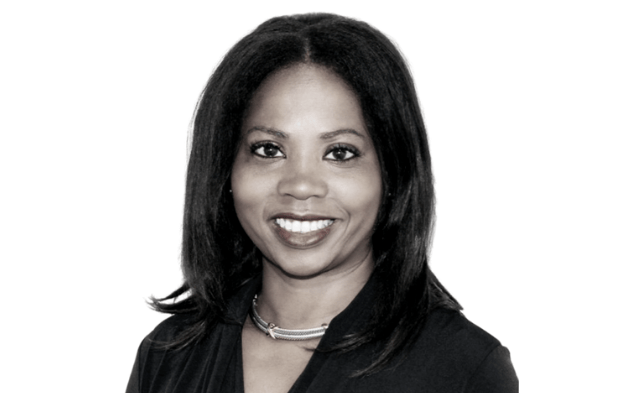When Kimberley Lewis (pictured above), head of active ownership at asset manager Schroders, used to work at Pfizer in the corporate responsibility department she was struck by how investor engagement with the drug company was often wide of the mark. Investors engaged on topics that weren’t the most material to the company; asking questions that Pfizer’s team knew weren’t particularly relevant to the company or sector.
“Do your research,” she urged investors gathered at Sustainability in Practice at Cambridge University in a panel session exploring the key characteristics of good active engagement. “You really need to think about the relevant issues for that company at that specific time,” she said, advising delegates to start comprehensively planning and researching 2023 engagement priorities now, ensuring cadence and materiality to increase the likelihood of success.
Successful active ownership requires investors to outline their expectations to corporate boards and clearly state their aims, she continued. Having set specific asks, she urged investors to track progress but with humility – neither assuming or projecting: investors should claim their stewardship role but balance that with demonstrating positive outcomes.
Active ownership involves clear intentionality, agreed fellow panellist Catherine Howarth, chief executive of ShareAction, the NGO that coordinates civil society activism. Investors can’t stumble into meetings ill prepared; they need to know what companies should do better with clarity around their asks. Investors should also have a plan of what they will do if corporate behaviour doesn’t change – preferably in agreement with peers seeking change. “People have different appetites for collaboration so collectively ensure you know what you are doing so the group doesn’t fall apart when you run into the first hurdle,” she said.
Engagement at Railpen, guardian and administrator of the United Kingdom’s £35 billion ($47 billion) Railways Pension Scheme, is managed internally mirroring the asset managers own bias to internal asset management – and growth equity. “This is a ripe hunting ground for stewardship,” said Michael Marshall, head of sustainable ownership. Articulating the benefits of internal stewardship, he said it helps ensure alignment between stewardship aims and pension fund beneficiaries, allowing Railpen to tailor its engagement and escalate on a timeline of its own choice. “We care about the issues companies face,” he said.
External benefits
The Universities Superannuation Scheme, USS, divides its stewardship of investee companies between internal and external management. External stewardship is delegated to carefully selected and monitored managers, explained Phil Edwards, head of manager selection at the pension fund. USS requires managers take clear ownership of stewardship priorities at a senior level and demands transparent reporting so the pension fund can see managers are doing what they say – along with compulsory PRI membership. Managers are selected according to their approach on stewardship and engagement; voting and transparency and the ability to work with others and lead, he listed.
The pension fund also checks managers voting record is aligned with its own principles and seeks relationships from which its own internal stewardship practices can also grow and evolve. “We assess every manager on these issues and the degree of alignment with our own approach,” he said.
Elsewhere USS investment managers can expect an escalation process. For instance, the pension fund recently voiced its concerns about one manager’s stewardship strategy, leading to the manager appointing a new head of stewardship. “We are encouraged – and now want to see changes,” said Edwards. “Escalation with our managers is a serious conversation that can ultimately lead to taking away some or all of our assets. We haven’t don’t this yet, but we would if we felt a manager was not taking action in a way we would like.”
Skills shortage
Panellists also noted the workload ESG teams face meeting disclosure and internal stewardship requirements. Investors are buying-in and developing internal stewardship skills, but recruitment is hard in the current market as the race for sustainability talent increases. “If you are going to do stewardship internally, prepare to be patient and pay,” warned Marshall.
Make it matter
Pension funds should ground stewardship programmes in the key interests of their own beneficiaries. Outside climate (in everybody’s interest) ShareAction’s Howarth noted health was a priority for many beneficiaries. “When you ask people what matters, health comes above income,” she said. This could lead to pension funds engaging on issues like a sugar tax. She also noted how more investors are engaging on biodiversity where strategies could focus on the agro-chemical industry.
Her point was echoed by Railpen’s Marshall, who noted that stewardship at the pension fund chimes with issues close to its beneficiaries like workplace rights. “Members views are reflected in the themes we adopt,” he said.
Collaboration
Howarth stressed the importance of collaborating with groups, citing ShareAction’s engagement on the living wage with the supermarket Sainsbury’s, working alongside NEST and Fidelity International. Elsewhere, engagement is best focused on sectors because it leads to whole industries moving forward. Panellists concluded with a nod to encouraging signs of investors getting more assertive and intentional about what they want to achieve, as well as a growing number of collaborations between asset owners and managers.


